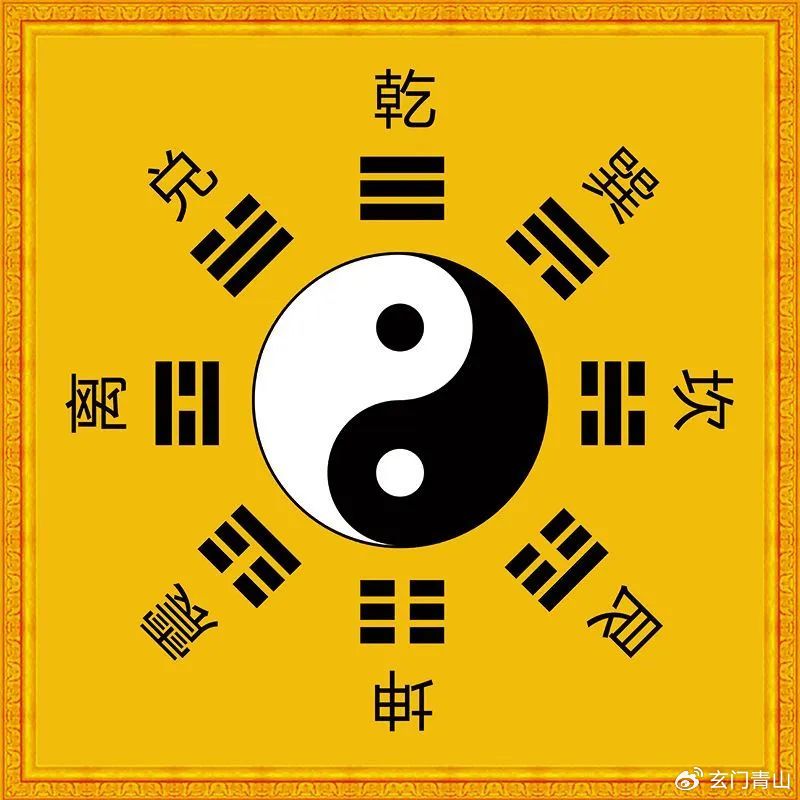How to Say December 31st in English, Mastering the Final Day of the Year, A Linguistic and Cultural Exploration
When discussing the last day of the year in English, the most straightforward translation is December 31st. This phrase follows the standard format for dates in American English, where the month precedes the day. However, the way we reference this significant date varies across cultures and contexts. December thirty-first is equally correct when spelled out formally, particularly in written communication. The ordinal indicator "st" denotes its position as the thirty-first day of December, distinguishing it from cardinal numbers used for counting.
In British English, you might encounter 31st December as the alternative format, reflecting the day-month-year sequence common in many Commonwealth countries. Both versions remain grammatically accurate, though regional preferences influence usage. For example, formal invitations in the UK typically place the day before the month, while American publications consistently use the month-day order. This distinction becomes crucial when interpreting international documents or planning cross-cultural events.
Beyond the literal date format, English offers several creative ways to reference December 31st. The most popular alternative is New Year's Eve, which carries cultural significance beyond just marking a calendar date. This term emphasizes the celebratory nature of the evening preceding New Year's Day. When people say "New Year's Eve," they typically refer to the entire period from late afternoon through midnight, encompassing parties, countdowns, and fireworks displays.
Less common but equally valid expressions include:
Proper grammar dictates specific rules for writing December 31st in English documents. In formal writing, the date should appear as December 31 without the ordinal suffix when following the month-day-year format (American English). However, when the date stands alone or precedes the month, the ordinal form becomes necessary: the 31st of December. This distinction maintains clarity and prevents confusion in international correspondence.
The apostrophe placement in New Year's Eve frequently causes confusion. The correct form shows possession because the eve belongs to the new year. Common mistakes include writing "New Years Eve" (missing apostrophe) or "New Years' Eve" (incorrect plural possessive). Remembering that we're discussing the eve of one specific new year helps maintain proper punctuation. This grammatical precision becomes especially important in formal invitations or published materials.
Different English-speaking regions have developed unique traditions surrounding December 31st, reflected in their terminology. In Scotland, Hogmanay represents more than just a date it's a multi-day celebration with specific customs like first-footing and singing "Auld Lang Syne." The term has Gaelic origins and demonstrates how local culture shapes language. Similarly, Jamaican communities might refer to Old Year's Night, emphasizing reflection rather than anticipation.
Religious contexts introduce additional terminology. Some Christian denominations observe Watch Night services on December 31st, tracing back to Methodist traditions. This term specifically references the spiritual practice of praying through the night into the new year. Understanding these variations allows for more nuanced communication when discussing end-of-year plans across different cultural or religious groups.
The choice between December 31st and New Year's Eve often depends on context and tone. Formal documents like contracts or academic papers typically use the numerical date for precision, while casual conversation favors the more festive "New Year's Eve." Business communications might strike a middle ground with phrases like "the year-end closing date" when referring to December 31st in financial contexts.
The way we reference December 31st has evolved alongside calendar reforms and cultural shifts. Early English records might show the eve of the Circumcision, referencing January 1st's old religious designation in the Christian calendar. The term New Year's Eve gained popularity during the 19th century as secular celebrations became more widespread. This linguistic shift mirrored society's movement away from purely religious observances toward inclusive, communal festivities.

Historical documents reveal fascinating variations in date notation. Medieval manuscripts often wrote dates relationally, such as "the last day of December in the year of our Lord 1600." The standardized numerical format we use today developed alongside the Gregorian calendar's adoption, with the ordinal system (1st, 2nd, 3rd) becoming standardized in the 18th century. This evolution demonstrates how practical needs shaped our current terminology for December 31st.
Speaking December 31st aloud presents specific pronunciation considerations. While December thirty-first remains universally understood, conversational English often shortens this to December thirty-one in casual speech. The ordinal form (-first) becomes more important when distinguishing dates ("the thirty-first" versus "the thirtieth"), but the cardinal number often suffices when the context is clear. This subtle variation illustrates how spoken English prioritizes efficiency in daily communication.
Regional accents influence how people pronounce New Year's Eve. Some dialects might blend the words together as "New Yearseeve," while others maintain distinct separation between syllables. The phrase frequently appears in song lyrics and holiday media, reinforcing standard pronunciation patterns. Non-native speakers should note that the "Year's" portion typically contracts in natural speech, sounding more like "Yearz" than the fully articulated possessive form.
December 31st has inspired numerous creative works that showcase its various names. Charles Dickens' "The Chimes" uses New Year's Eve to frame its moral lessons, while modern films like "When Harry Met Sally" feature iconic December 31st scenes. These cultural touchstones reinforce the date's terminology while adding emotional resonance. Analyzing how different media properties reference the date reveals subtle linguistic choices based on target audience and historical period.
Journalistic style guides mandate specific approaches to writing about December 31st. The Associated Press Stylebook recommends Dec. 31 for news articles when space is limited, reserving the full month name for formal contexts. Meanwhile, literary publications might prefer the thirty-first day of December for rhythmic or dramatic effect. These distinctions highlight how professional standards shape our encounter with date terminology in various media formats.
Teaching English learners how to reference December 31st involves multiple linguistic layers. Instructors must cover:
Practical exercises might include converting dates between formats, writing invitations using appropriate terminology, or discussing holiday traditions using the correct terms. These activities reinforce not just vocabulary but also the cultural competence needed to navigate English-speaking environments during the holiday season. The dual focus on linguistic accuracy and cultural awareness makes December 31st an especially rich teaching topic.
Examining how other languages reference December 31st illuminates English's unique characteristics. Romance languages like Spanish use Nochevieja (old night), while German has Silvester (named after Saint Sylvester). English stands out by combining the precise numerical date with the conceptually distinct "New Year's Eve." This duality allows speakers to choose between neutral chronology and festive celebration in their terminology.
The translation of December 31st concepts between languages reveals cultural priorities. Some languages lack an exact equivalent for "New Year's Eve," instead using phrases that translate to "year's end night" or "old new year." These variations demonstrate how English has developed specialized vocabulary for this transitional moment that other languages might express through descriptive phrases rather than dedicated terms.

Corporate environments develop specialized terminology around December 31st that diverges from common usage. Financial sectors reference year-end close or fiscal year-end, emphasizing accounting processes rather than the calendar date. Human resources might discuss benefit year termination, while retail businesses focus on post-holiday sales. This professional jargon demonstrates how industry needs shape language, creating parallel terminology systems alongside everyday usage.
International business communications require careful attention to date formatting to prevent confusion. A global company might mandate using 31 December 2025 in all correspondence to maintain consistency across offices. This approach minimizes misinterpretation that could affect contract dates, delivery schedules, or financial reporting. The standardization reflects practical concerns rather than linguistic preference, showing how real-world needs influence language evolution.
Computer systems handle December 31st through standardized date formats that often omit linguistic nuances. The ISO format 2025-12-31 (year-month-day) ensures unambiguous sorting and processing across international systems. Programming languages might represent the date as a numerical value or timestamp, completely bypassing the English terminology. These technical representations exist alongside human-readable forms, creating a parallel system for date referencing.
Digital calendars and scheduling apps present December 31st according to user preferences, allowing customization between numerical and word-based displays. This flexibility accommodates personal taste while maintaining machine-readable precision in the background. The interplay between these layers demonstrates how technology both preserves and transforms our relationship with date terminology, particularly for significant calendar markers like year-end.
Statutes and contracts demand precise terminology when referencing December 31st. Legal language typically uses the full December 31, 2025 format without ordinal suffixes to prevent ambiguity. The phrase on or before December 31st frequently appears in clauses with deadlines, where the exact cutoff carries financial or legal consequences. This precision contrasts with casual usage, highlighting how context determines linguistic formality.
Government documents often pair December 31st with explanatory phrases like the tax year ending December 31 or the calendar year ending December 31st. These constructions eliminate potential confusion about which year the date belongs to a crucial distinction for benefits, taxes, and reporting periods. The added verbiage, while seemingly redundant in casual contexts, serves important clarifying functions in official communications.
Scientific disciplines approach December 31st terminology with specific requirements. Climate studies might reference DOY 365 (day of year) in datasets, while astronomers could use JD 2460711.5 (Julian Date) for precision. These alternative systems demonstrate how specialized fields develop their own date-referencing methods that bypass conventional calendar terminology entirely. The coexistence of these systems shows language adapting to different precision needs.
Weather reporting presents an interesting middle ground, often using December 31st in public forecasts but switching to numerical or coded formats for data exchange. This dual approach accommodates both human readability and machine processing. The meteorological community's treatment of calendar dates illustrates how professional domains balance communication clarity with technical requirements when referencing significant annual markers.
The terminology surrounding December 31st takes on personal significance in self-improvement contexts. Phrases like year-end review or New Year's resolutions carry psychological weight beyond their literal meaning. The language we use to frame this temporal boundary whether as a hard stop (deadline) or transitional moment (eve) influences our mindset and approach to personal growth. This demonstrates how date terminology intersects with motivational psychology.

Productivity systems often leverage December 31st terminology to create urgency or reflection. The phrase before the ball drops conveys time sensitivity, while closing the year suggests completion. These metaphorical uses extend the date's linguistic significance beyond calendar notation, showing how language evolves to meet emotional and psychological needs surrounding annual transitions.
The tourism sector has developed specialized terminology around December 31st to market experiences. Phrases like New Year's Eve package or year-end getaway appear in promotional materials, emphasizing celebration rather than the calendar date. Luxury hotels might offer gala dinner on the 31st, blending formal date terminology with event branding. These examples show how industry needs shape language to create appealing, marketable concepts.
International travel introduces additional complexity in December 31st terminology. Multilingual destinations might use parallel terms like 31 décembre/Nochevieja to accommodate diverse guests. Cruise lines and airlines develop specific codes for year-end travel periods that appear in booking systems but translate to consumer-friendly date references in public-facing materials. This layered approach to date terminology serves both operational and marketing functions.
Online platforms have generated new ways to reference December 31st through hashtags and abbreviations. Trends like NYE (New Year's Eve) dominate seasonal posts, while 1231 serves as numerical shorthand. These condensed forms adapt date terminology for character-limited platforms while maintaining recognizability. The evolution demonstrates how digital communication drives linguistic innovation even for established calendar references.
Memes and viral content contribute alternative December 31st terminology like New Year's Eve or Last Day of the Year. These playful variations often incorporate pop culture references or humorous takes on year-end exhaustion. The rapid spread of such terms through social networks shows how digital culture accelerates language evolution, creating shared references that might temporarily supplement or even replace conventional date terminology.
As global communication evolves, we might see further standardization or diversification in how English references December 31st. The increasing dominance of digital calendars could reinforce numerical formats, while cultural movements might revive traditional terms like Hogmanay in broader usage. The tension between global consistency and local specificity will likely shape future terminology, with certain forms gaining prominence based on media influence and technological trends.
Potential developments could include:
The way we say December 31st in English carries more significance than simple calendar notation. Whether choosing between formal and casual terms, navigating international variations, or considering specialized professional usage, the terminology reflects cultural values, practical needs, and linguistic evolution. This exploration reveals how even our most basic temporal references contain layers of meaning waiting to be unpacked by curious language enthusiasts and cultural observers alike.